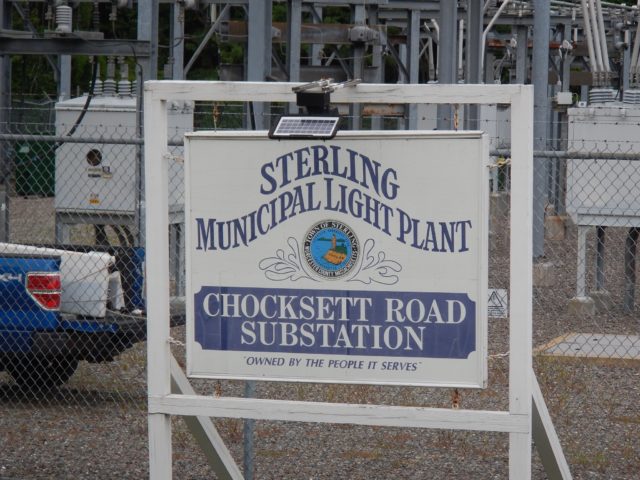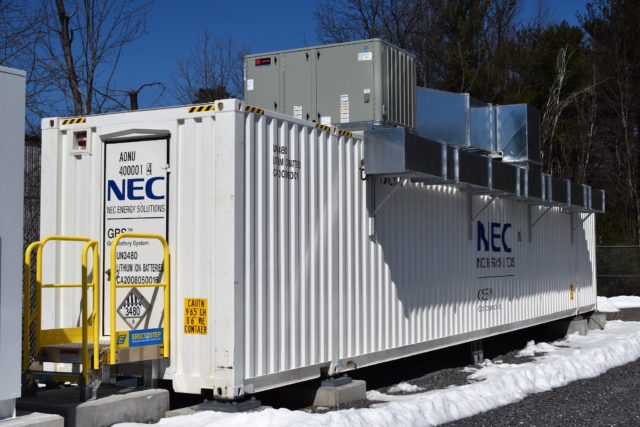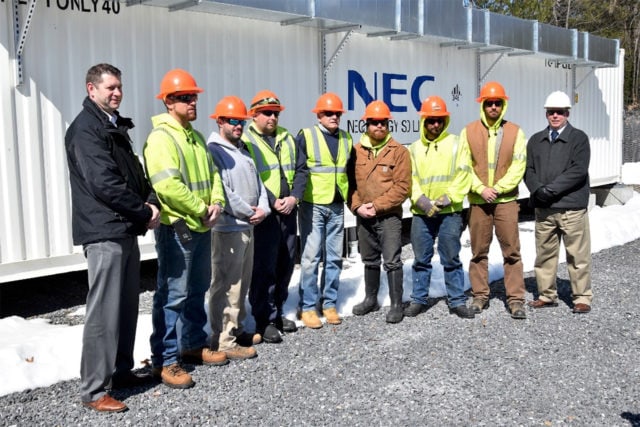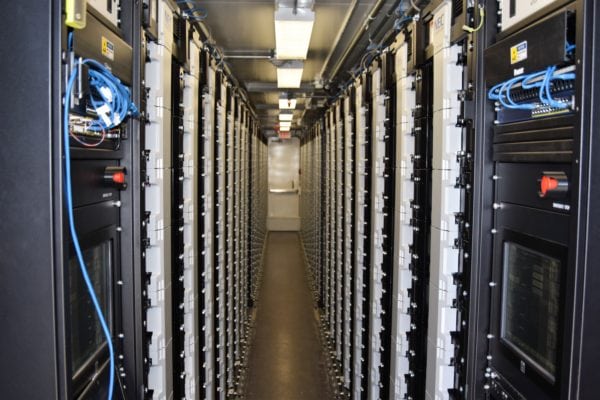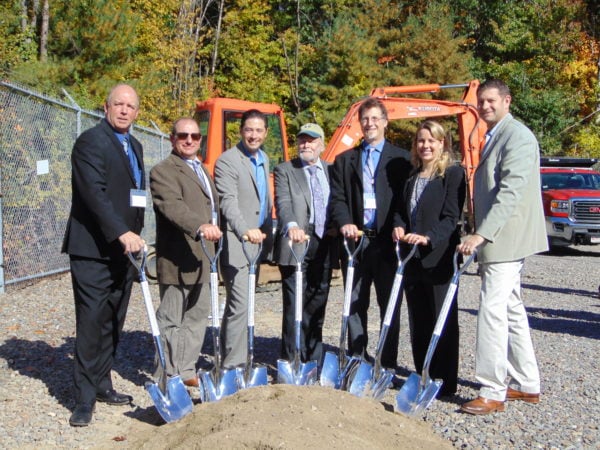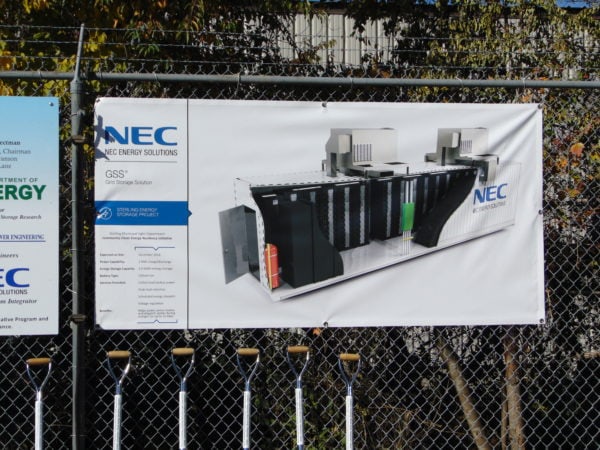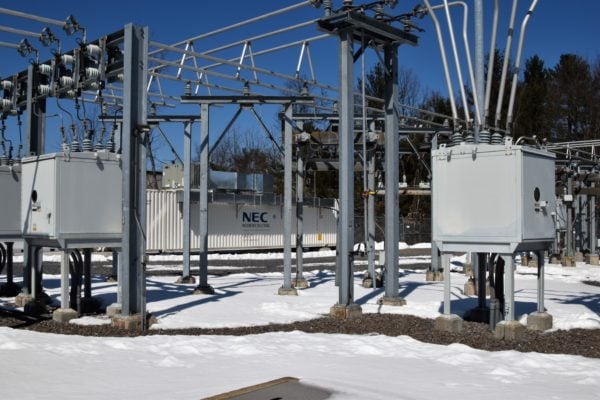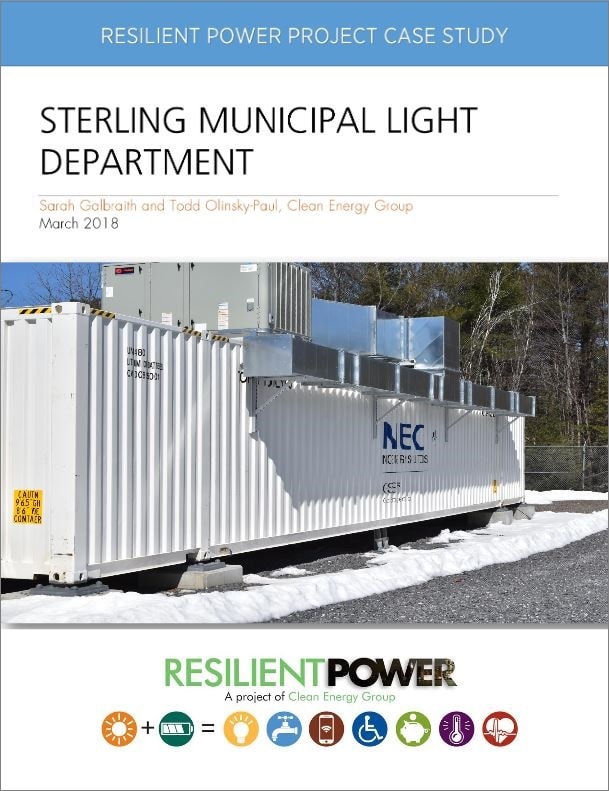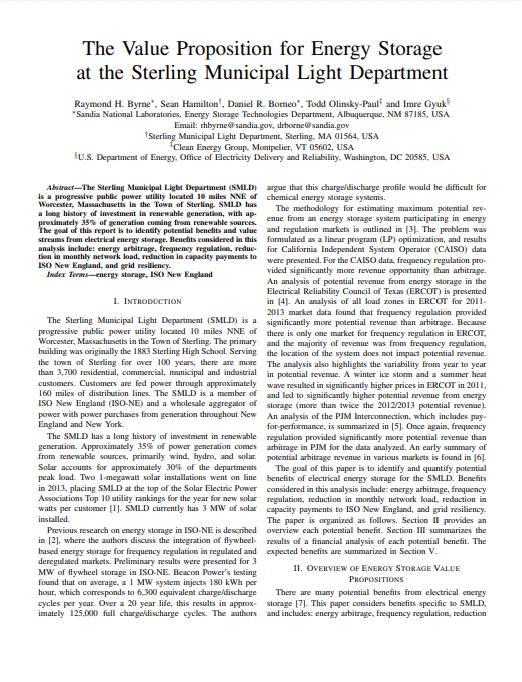Sterling’s Solar + Energy Storage System
A solar+storage project provides vital resiliency and economic benefits to the town of Sterling, Massachusetts.
The system, which is owned by Sterling Municipal Light Department (SMLD), provides emergency backup power to the town’s critical facilities providing first responder services in the event of a grid outage, and provides electricity cost savings to ratepayers. The Sterling energy storage project was supported by Massachusetts Department of Energy Resources, U.S. Department of Energy’s Office of Electricity (DOE-OE), Sandia National Laboratories, Clean Energy States Alliance, Clean Energy Group, and the Barr Foundation.
VIDEO: Sterling Municipal Light Department Energy Storage System – A Revolution for the Electric Grid
Sterling Municipal Light Department has deployed a 2-megawatt/3.9 megawatt-hour battery storage system at Sterling’s Chocksett Road Substation that is able to isolate from the main grid in the event of a power outage and, with an existing PV array, provide up to 12 days of emergency backup power to the Sterling police station and dispatch center, a community facility providing first responder services.
As important as it is to provide clean, resilient power to essential community facilities such as the Sterling police station, it is equally important to show that energy storage is an economical way to do this. For this reason, the Sterling energy storage project received funding from DOE-OE under its energy storage demonstration program. A key feature of the project, which DOE-OE and Sandia National Laboratories are supporting, is to demonstrate and analyze the economic case for the batteries.
By discharging the batteries during hours of peak electricity demand, the Sterling energy storage project is expected to save the town’s ratepayers at least $400,000 per year by decreasing costs associated with capacity and transmission charges from the regional power services supplier, ISO New England. Sterling will be able to lower its demand for grid services from the ISO by discharging the battery system during times of regional peak demand. The project demonstrates a strong investment strategy for municipal energy storage: With the help of grants, this $2.7 million project is expected pay for itself in just over two years; and even without the grants, the payback period would likely be fewer than seven years.
Construction on the Sterling energy storage project began in the fall of 2016, and the project was completed and commissioned in December 2016. This project is the first utility-scale energy storage facility in the state and one of the largest battery installations of its kind in New England.
Photos
Click on the photos below to view full size with captions.
Installation Details
Year Commissioned
2016
Services Provided
Backup power, Demand management, Demand response, Renewables integration, Microgrid
Supported Infrastructure
Police station and dispatch center
Solar
2 MW (existing)
Storage
2MW/3.9MWh lithium ion battery
Project Partners
Sterling Municipal Light Department, Massachusetts Department of Energy Resources, US Department of Energy Office of Electricity, Sandia National Laboratories, Clean Energy States Alliance, Clean Energy Group, Barr Foundation
Associated Webinars
One Year In - Energy Storage Proves its Worth in Sterling, MA (March 2018)
The Value Proposition for Energy Storage at the Sterling Municipal Light Department (April 2017)
Energy Storage in Sterling: A Massachusetts Municipal Microgrid (October 2016)
Associated Blogs
Small Community Saves Big with Energy Storage (April 2017)
Sterling, Massachusetts Breaks Ground on a Resilient Energy Storage System (October 2016)





